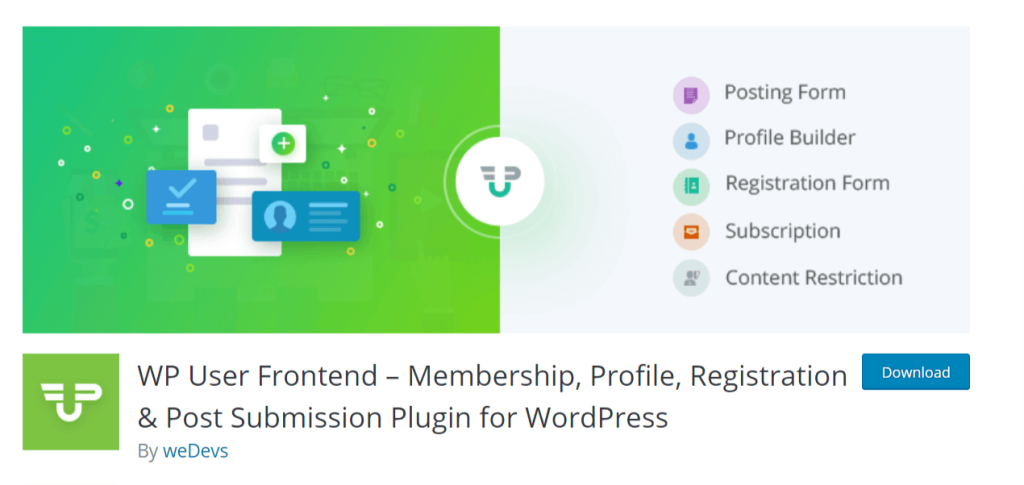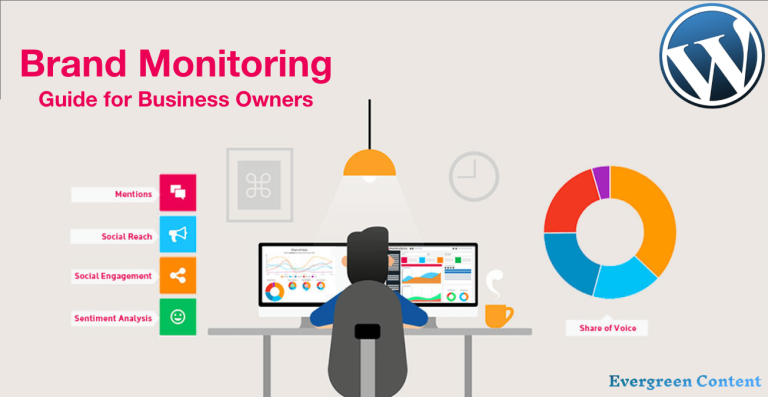10 Popular Pricing Models For Membership Websites
Whenever you think of a membership site, one of the first things that will scratch your mind is pricing. There are basically three types of membership websites:
- Learning Management Systems (LMS)
- Association Membership
- Subscription Sites
So, identify the category of your membership site. Because this is the very first thing that will affect your pricing model.
There is no universal hack that one pricing model will yield you life-time benefits.
Therefore, here we will help you learn 10 popular pricing models for membership websites. Also, we will provide you with a short description of the factors that may affect your pricing decisions.
Things To Consider In Finalizing Pricing Model For Membership Websites
Setting a good price depends much on market factors. Here, we will explain the influential factors that you must consider before finalizing your pricing models.
Evaluate Your Competitors
A market never sleeps. There are always some competitors to shrink your market share. Therefore, you need to carry out a competitor analysis to set powerful pricing strategies for your business.
Porter’s five-point is a popular metric that can help you evaluate your market competitors. Using the metric, you can easily explore their strength, weakness, and potential in the market.
Understand Supply and Demand Settings
If your services have good demand in the market, you are in a winning position to set prices. But in case there are too many suppliers of your services, you must discover competitive advantages to set prices.
Again, if the market is saturated with too many competitors and you have no advantage left, better to come up with a new product/service idea.
Know Your Service Value
Your services must have the ability to meet the needs and demands of your audiences. Otherwise, your membership site will have no value to the market audience.
So, try to link the value of your services directly to the need of your audiences. It will help you set up a sustainable membership site.
Identify Your Audiences
As technology advances, the needs and demands of customers are regularly changing. What they deemed valuable months ago might not be appealing anymore.
Basically, there are two types of audiences for the membership sites. They are one-time users and regular users. So, identify the types of audiences who will never cease out from the market.
Besides, you have to keep adjusting your service values to sustain your competitive advantages in the market.
Study Audiences Affordability
Suppose, you have a good product. But its price goes beyond the affordability of your customers. So, will they buy it? Obviously not.
Again, if you think of dropping its price uncompromisingly, won’t be a smart move too. Because it will make the users think your products are low-graded. It may affect your brand value severely.
So, you must check the affordability of your target audiences before finalizing your pricing models.
Define Your Milestone
KPIs like growth, traffic, sales, engagement, revenue, etc. can help you in this regard. Whether you fail to meet a particular milestone, you can check the history to find out your mistakes.
Thus, you can rectify your strategies for the next milestone. So, having milestones are quite important to ensure your site’s sustainability.
Setting a price is probably the most sensitive part for any business. Once you are done with the above factors uncompromisingly, you are nearest to success. Next comes the pricing models……
Popular Pricing Models For Membership Websites

Honestly, there are endless pricing models across the world. But not all of them are equally suitable to serve your purpose.
Here we will cover 10 popular pricing models for membership websites that you must include in your checklist.
Flat Rate Subscription Pricing
The flat rate pricing model charges the same fee at the end of each membership period. It doesn’t have any hidden charges or discounts. Customers have to pay the subscription fees at face value.
Renowned news portals, newsletters, video streaming, and listing companies usually follow this pricing system. Popular flat-rate pricing modes are weekly, monthly, 90-days, 6 months, and yearly.
Our Opinion
You have to keep generating new values for your membership services. Otherwise, active users might not be interested to subscribe the next plan. So, you must have a backup to entice your customers with new values.
Front Load Membership Pricing
Front-load membership pricing charges a high fee at signup. Then low rates from the following subscriptions. For example, the sign-up cost is $100; and the following subscription costs are $10.
It can save your business from bad debt and late payments. You can use the sign-up cost to cover maintenance and customer acquisition costs.
Our Opinion
Upfront membership pricing can help you build a long-term relationship with your users. Because once they sign up, you can take that they are subscribing to the following plans as well.
But it will work only when your target audiences have a full phase of trust in you. So, if you don’t have a loyal audience base, better to avoid this model.
Installment Membership Plan
The installment plan is another popular pricing model for membership websites. It is convenient when your subscription rate is too high and customers cannot afford it in one payment.
Herein, installment plans can allow your users to complete the subscription fee in multiple payments.
Our Opinion
This installment pricing model is suitable for all types of membership sites. But if any users delay paying their installment fees, you can warn them or restrict their accessibility.
Lifetime Subscription Plan
A lifetime subscription helps a user to avoid the hassle of recurring subscriptions. Once they purchase your service, they will enjoy it forever.
A good thing about this model is it will bring you a good sum of money in a real quick time. But the drawback is you have to provide the users endless support, even if the maintenance cost increases someday.
Our Opinion
You can offer lifetime subscriptions to your audience as part of promotions. On special occasions like Halloween, Black Friday, and New Year, this model can bring you a good flow of money.
Founding Membership Plan
Founding membership planning can bring you subscriptions even before you launch your membership site. This model is very useful when you are short of money.
And in honor, you entitle these subscribers as the founding members of your site. Because they are trusting you even before you launch your site.
Our Verdict
This is another popular pricing model. Because, you don’t have to share profits with them, they are entitled to be the founding members of your site.
You just need a good idea at the beginning. Then share it on different cloud funding platforms, like Kickstarter, Indiegogo, Patreon, and others. There are many people who will subscribe to your idea if it is really worth it.
Bundle Pricing Model
When your sales target is big but audiences cannot afford many of your products, bundle pricing can save your life. It can increase your revenue overnight.
Using the bundle model, you can create different types of packages and sell them at a discounted price. For example, the regular prices of three products are $25, $30, $35. Under a bundle, you can sell them for $45.
Our Verdict
You must use this pricing model for a limited period. Because offering bundle packages too frequently can damage your market. Better to make a map when you will launch the bundle offers.
Addon Pricing
Add-on pricing can help you upsell your additional products to boost sales revenue. Here, customers pay a standard fee at the beginning for basic membership services.
Besides, they have the option to add up new extensions to increase the workability of their existing product.
For example, a SaaS product has several membership plans: basic, standard, and pro. Besides, it has many other modules, like Live Chat, Geolocation, Wirecard, and so on.
Users have the free will to subscribe to the extensions if they feel necessary.
Our Verdict
This is a cost-effective pricing model for the users. Because they can avoid the cost of the extensions that are useless to them. Using this pricing system, you can add commercial values to your new extensions and services.
Tired Pricing Model
Using the tired pricing model, sellers categorize their products in a sequence. And then offer them at progressive discount rates. This is a great way to pull the customers to buy new products to qualify for more discounts.
For example, Spotnick Developers have a plugin with thirty different modules. For the first ten, per module cost is $5. Then for the second ten, per module cost will go down to $4. And the rest will cost $3.
| Tier | Quantity | Per Item | Tier Cost | Discount |
| 1 | 1-10 | $5 | $50 | $00 |
| 2 | 11-20 | $4 | $40 | $10 |
| 3 | 21-30 | $3 | $30 | $20 |
Our Verdict
Tiered pricing is much more suitable for digital products. Because you can generate unlimited digital products without impacting much on the manufacturing cost.
Therefore, you can use this model to sell products like licenses, widgets, seats, modules, etc.
Utility Pricing
Utility pricing is an adjustable pricing model. You can use this model to bill your users based on consumption metrics. Simply, customers pay as much as they have consumed.
This is a popular pricing model among hosting providers, cloud servers, and email marketing servers. Besides, many payment gateways like Braintree, Stripe, PayPal, and credit cards follow the same model.
Our Verdict
You can charge utility rates in two ways. Instantly after a service, or at the end of a period. Now, it’s up to you whether you can bear the expense till the end of a period, or want to charge instantly.
Sponsored Membership Pricing
During the economic downturn, most of the market people lose their purchasing power. You can imagine the example of the 2007-08 recession. One-to-one marketing cannot generate good ROI during this period.
Sponsored membership is a great way to continue selling during these periods. You have to target and offer a parent account to purchase multiple membership plans at a discount rate for his team.
Suppose, the yearly membership cost of a service is $100. Now, you can offer a parent company ten licenses at $700, for all of its employees. Though you are giving a $300 discount, it is saving your marketing cost at the same time.
Our Verdict
Not only in economic downturns. You can use this pricing model anytime if your membership business falls into a financial crisis. Hence; today it is one of the most popular pricing models for membership websites
Wrap-Up Popular Pricing Models For Membership Websites
Pricing is always a mind game. There is no inflexible rule that you have to stick to within these 10 popular pricing models for membership websites. But we believe you have got guidance on how the system works and how to alter it.
Now, you can use self-experience to innovate better ideas to become a prudent player in any critical situation. Feel free to share your idea in the comment section for suggestions.







